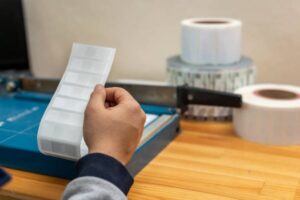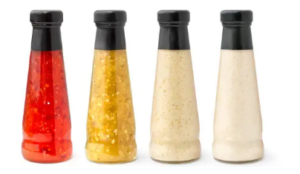RFID tags are electronic components designed to transmit, receive and store data. Each one consists of an integrated circuit (IC) and antenna.
 RFID-enhanced driver’s licenses assure us that our data is safe from hackers; however, privacy advocates caution us of how marketers, stalkers, and thieves could also exploit this technology to track us without our knowledge or consent.
RFID-enhanced driver’s licenses assure us that our data is safe from hackers; however, privacy advocates caution us of how marketers, stalkers, and thieves could also exploit this technology to track us without our knowledge or consent.
Cost-Effectiveness
Since labour expenses account for 50-80% of distribution centre operating expenses, RFID tags price can be instrumental in cutting them significantly. In addition, inventory check-in, counting and shipment verification tasks can all be completed quickly and accurately with little employee intervention – helping facilities increase throughput while improving their ROI – especially in high-volume environments.
While initial investments required to test and deploy RFID equipment are non-refundable expenses, recurring costs such as tags and printer ribbons become part of your operating budget once in operation. Furthermore, software costs may incur subscription-based or annual licensing fees depending on its functionality.
Passive RFID tags do not need power sources but use an antenna to transmit data to readers. Data encoded inside an integrated circuit and transmitted over its antenna must be within range for readers to read; passive tags are small in size with long lifespans of over 20 years and affordable prices.
RFID offers pharmaceutical industries a solution that allows them to track stock easily. In addition, RFID makes monitoring inventory easy; staff can quickly alert managers if stocks start getting low, helping ensure medicines remain effective.
An RFID solution has already been implemented at one hospital to ensure health care workers wash their hands after using the toilet. A tag attached to each worker’s wristband enables a reader that has been installed nearby to verify whether or not their hands were washed properly.
Retail operations that prioritise inventory accuracy benefit from improved stock management, leading to faster fulfillment and customer satisfaction. This is especially essential in omnichannel operations, where customers expect the ability to purchase something online and pick it up later at their nearest store location. RFID allows retailers to locate products within stores quickly and inform customers when they are available for pickup.
Higher Accuracy
Barcodes only store limited data, while RFID tags price can store much more. Their unique identification data makes RFID an effective tool to track products and prevent loss or theft. Still, their portability means they may be used outside the original supply chain, potentially leading to fraud or scams that businesses should safeguard against by taking proactive security steps.
RFID tags have three main components: an integrated circuit (IC), an antenna and a substrate. Label manufacturers assemble an IC or microchip manufactured by a semiconductor company into tags.
Active RFID tags require power from an external source, such as a battery, to send out signals for detection by readers. Due to this requirement, active tags tend to be larger due to the presence of batteries; however, their increased accuracy and longer read range make up for any costs involved in buying them.
RFID systems in retail can reduce losses by helping prevent shoplifting and employee fraud – which cost retailers in the US $94.5 billion last year alone – as well as optimising inventory levels while improving customer service through providing up-to-date stock information.
RFID tracking enables companies to monitor items from production through delivery, which improves accuracy and efficiency in labs while decreasing errors. For instance, using RFID tags on sample bottles helps ensure patients receive their correct samples while accessing real-time patient monitoring data and analytics.
RFID can also be incorporated into apparel to monitor wear and tear, which helps decrease shrinkage and product recalls. RFID can also detect in-store traffic patterns like high traffic end caps, pinch points and different employee and product paths throughout the day – helping businesses better understand customer needs to increase sales and ROI.
Less Monitoring
RFID tags enable organisations to quickly track items that require storage safely – whether components on an assembly line, finished goods needing safekeeping in warehouses, tools and laptops often misplaced in high-rise warehouses, or tools or laptops that often become misplaced within them – with minimal human supervision required. This saves time and money spent searching for lost or misplaced equipment while increasing productivity and decreasing accidental loss risks.
Contrary to barcodes, which are printed directly onto objects and can easily be damaged, RFID tags contain sensors attached to an antenna that is more expensive but offer greater read distance and the capability of communicating with other sensors and devices to create complex applications. Furthermore, their sensors are more resilient, capable of withstanding harsh conditions like exposure to water, heat or cold.
RFID readers are designed to detect and read multiple tags simultaneously, enabling them to quickly scan multiple containers and pallets in warehouses – increasing productivity significantly. In addition, since RFID tags do not require a direct line of sight, they can be used even in warehouses with poor lighting or high ceilings.
Warehouses can utilise RFID technology to facilitate stock picking. In addition, RFID sensors are being integrated into drones that scan shelves for items, making product location faster and easier and aiding employees when items are ready for collection.
RFID can play an instrumental role in helping reduce quality assurance issues. By monitoring product movements from the factory to the shelf, RFID ensures they pass any safety checks and can be trusted by customers for use – for instance, a boiler has been inspected and checked before being shipped out for shipping to customers.
RFID tags present risks; they can store personal or sensitive data that could compromise privacy. However, this risk can be managed using a security protocol that prevents readers from accessing tagged data or intercepting its signals.
Increased Security
An RFID tag uses an integrated circuit and antenna powered by radio waves of a specific frequency passing through it. These radio waves activate its chip, sending data back to its reader who detected it – this allows for various security applications like preventing shoplifting in retail stores or hospital rooms, controlling access to sensitive areas like shipping containers or hospital rooms, and ensuring tagged items remain where they should be.
RFID technology can make borders more secure by equipping passport transponders with biometric images to help authorities match passport holders when crossing borders. However, RFID doesn’t just improve security in this way – it also prevents theft by enabling workers to scan items without turning them over or dealing with barcodes that might become damaged or fall off altogether.
RFID tags don’t require line-of-sight systems for reading, which allows them to be read over long distances without needing to open boxes or containers, making scanning faster and cataloguing simpler while providing visibility for consumers, retailers and other stakeholders.
Increase RFID security with encryption methods between reader and tag that render the tag information unintelligible to any attempting to read it. However, this can increase the complexity of tags and cost as a result. It is also essential to consider environmental and material effects such as metal, liquids or electromagnetic interference on RFID systems when developing security plans.
Some fear RFID tags price could threaten consumer privacy by secretly being used to read tags without their knowledge. However, this would require using an antenna with significantly more power than what’s needed for most RFID readers from reasonable distances. Furthermore, since RFID doesn’t link purchases with individual identifiers such as names or social security numbers, this shouldn’t pose too many security concerns.
 For many fans of the Star Wars franchise, a lightsaber is more than just a weapon. It is a symbol of power, courage, and strength. These sabers are the tools that Jedi use to harness and control the Force. They are also used to fend off Sith and Dark Jedi attacks.
For many fans of the Star Wars franchise, a lightsaber is more than just a weapon. It is a symbol of power, courage, and strength. These sabers are the tools that Jedi use to harness and control the Force. They are also used to fend off Sith and Dark Jedi attacks. You might think of ketchup and mustard when you hear “squeeze bottle,” but these handy plastic vessels with lids and nozzles do much more than hold store-bought condiments. They’re the perfect container for homemade sauces, salad dressings and more.
You might think of ketchup and mustard when you hear “squeeze bottle,” but these handy plastic vessels with lids and nozzles do much more than hold store-bought condiments. They’re the perfect container for homemade sauces, salad dressings and more. RFID-enhanced driver’s licenses assure us that our data is safe from hackers; however, privacy advocates caution us of how marketers, stalkers, and thieves could also exploit this technology to track us without our knowledge or consent.
RFID-enhanced driver’s licenses assure us that our data is safe from hackers; however, privacy advocates caution us of how marketers, stalkers, and thieves could also exploit this technology to track us without our knowledge or consent.